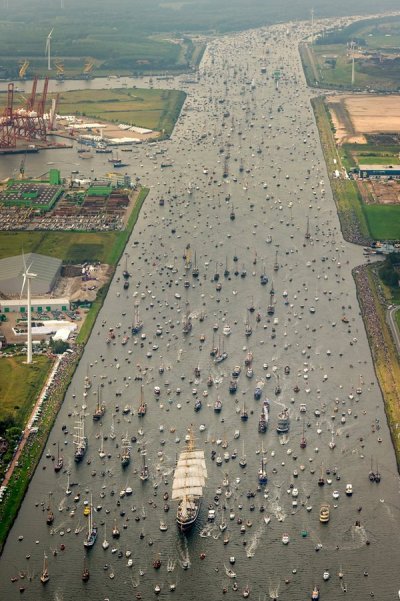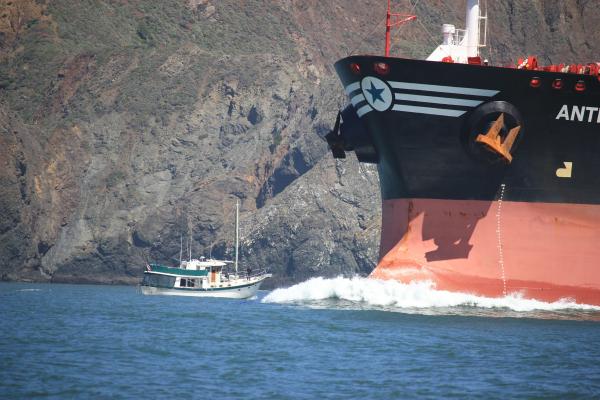ulysses
Guru
CaptBill11: I am glad that you were taught the proper use of the sound signals from those on tankers and nuc. subs. I have yet to have operated the nuclear subs and doubt that I will, but I have operated and been the pilot on all sorts and sizes of vessels. Employed for years as master of unlimited tonnage STEAM AND MOTOR VESSELS AND FIRST CLASS PILOT LOWER MISS. RIVER. The largest vessel having piloted routinely was over 10,000 HP and 1100 feet in length. I was pilot on side wheeled steam boats when the VHF was still a novelty to many. So I am very aware of the use of sound signals. If you yourself have not been on a large vessel then I can certainly see where you might THINK that those numerous sailboats were not obscured but you best believe they were. Depending on the location and the load/unloaded nature of the ships and its wheelhouse it is very common not to be able to see other vessels that are under 1/2 to 3/4 of a mile away. Just like the semi-truck's notice "If you can't see my mirror I can't see you". Obstruction from the vessel itself. Or perhaps the neighboring sailboat is hidden behind someone's jib or spinnaker.
Let's look at it from the smaller vessel's point of view considering that vessels operator is knowledgeable concerning the rules. He hears one prolonged blast. A mental checklist is then gone through. A. Is it Foggy? if no go to B. B Is a vessel nearby leaving a dock? If no then C. C Is there a vessel that I can not see or can't see me ? If I can not see into the other vessel's wheelhouse whether from his bow section or a sail or other item then that vessel's pilot can not see me. Operate your vessel appropriately.
Considering Mark's comment it would appear that the pilots of the ships operating in his area use the prolonged blast for the purpose in compliance of 34e of the rules indicates that they too are aware of the sound signals as your friends may have been on nuc. subs. Do you think they have less knowledge or experience than your friends ?
It was not my purpose to belittle your comment as to the meaningless of a prolong blast. It was my purpose to explain the nature and reasoning behind the evident use of the prolonged blast and not to let people leaving this post believe that it is useless and/or inappropriate signal.
Let's look at it from the smaller vessel's point of view considering that vessels operator is knowledgeable concerning the rules. He hears one prolonged blast. A mental checklist is then gone through. A. Is it Foggy? if no go to B. B Is a vessel nearby leaving a dock? If no then C. C Is there a vessel that I can not see or can't see me ? If I can not see into the other vessel's wheelhouse whether from his bow section or a sail or other item then that vessel's pilot can not see me. Operate your vessel appropriately.
Considering Mark's comment it would appear that the pilots of the ships operating in his area use the prolonged blast for the purpose in compliance of 34e of the rules indicates that they too are aware of the sound signals as your friends may have been on nuc. subs. Do you think they have less knowledge or experience than your friends ?
It was not my purpose to belittle your comment as to the meaningless of a prolong blast. It was my purpose to explain the nature and reasoning behind the evident use of the prolonged blast and not to let people leaving this post believe that it is useless and/or inappropriate signal.






